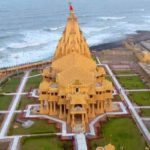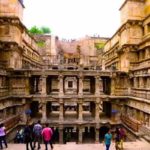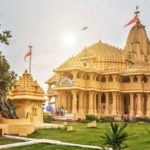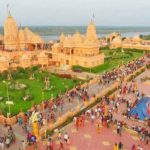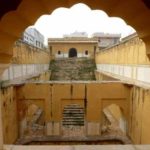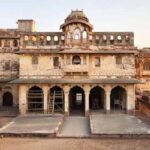Rani Ki Vav Gujarat The Queen’s Stepwell or Rani Ki Vav is a sub terrain rock cut step well on the banks of the river Saraswati in the Patan town of Gujarat in India. The most found instance of step well use is found in the provinces of Indian subcontinent where the flourish of Indus Valley civilization occurred. However the most recent exaction of a certain sub terrain step well architecture confirms the use of step well and that too at the fag end of 1st millennium CE. The Rani Ki Vav in Gujarat is that proof.
Rani Ki Vav Gujarat is actually an inverted temple built along the banks of the river according to the design and civil architecture of step wells unearthed as late as in the year 1980s by the Archaeological Survey of India because the site remains flooded by the recurrent floods in Saraswati River Gujarat Tour Packages.
As the name states the step well inverted temple was built by the order and under the supervision of a certain queen of the Chaulukya Dynasty. After the death of Chaulukya King Bhimdev I in 1064 CE, his widowed queen, Udaymati and his son Karna, built this structure as a memorial of the late king. The temple is made of rock cutting and edifice sculpturing based of Maru Gurjara architectural style. The temple has many pillars and intricate corridors with a central courtyard and a main stepping welling of five stages. The temple houses as many as 500 principal sculptures and statues of which the main ate the ten avatars or incarnation of Lord Vishnu.
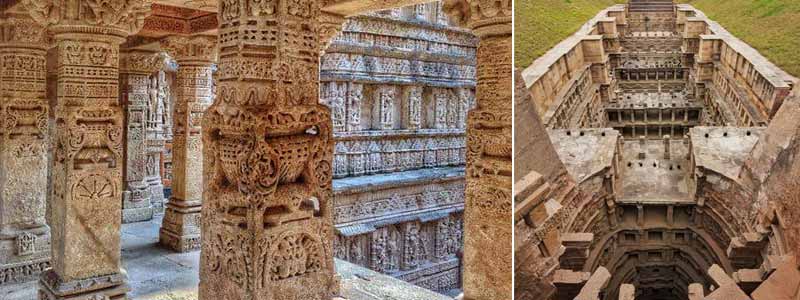
Rani ki Vav: History
Known for its unique architectural style, this giant queen’s vav is located in Patan city of Gujarat. Once the capital of Gujarat during the medieval period, Patan today stands as a testimony to the bygone era. Patan was a Garhwali town built during the 8th century by Vanraj Chavda, the king of the Chavda kingdom of Chalukya Rajputs. This grand stepwell was built by Udayamati, wife of Bhimdev, the ruler of the Solanki dynasty, in the 10th-11th century in memory of her late husband. This 7-story stepwell was constructed between 1022 and 1063.
Bhimdev, the ruler and founder of the Solanki dynasty, ruled Vadnagar Gujarat from 1021 to 1063 AD. This historic heritage queen, located about 140 kilometers from Ahmedabad, is considered to be a symbol of love for the queen.
It is believed that this unique stepwell was constructed to properly manage the water, as the area received very little rainfall, while according to some folklore, Rani Udayamati aimed to earn merit by providing water to the needy people. Also, the herbs growing on the sides of this monument were used to treat viral fevers, which were fatal diseases at the time.
Situated on the banks of river Saraswati, this huge step-step stepwell was buried in the mud and mud debris for almost 700 years due to the flooding in this river, after which the Archaeological Survey of India in this 80s Excavated the place. After a lot of digging, this stepwell came in front of the whole world.
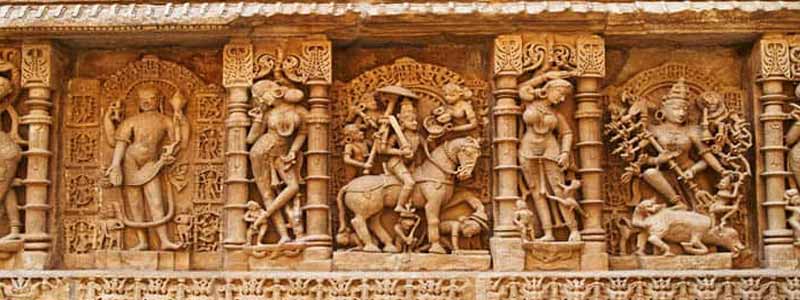
Rani ki Vav Architecture
Constructed in the Maru-Gurjara architectural style, this east-facing memorial is spread over 12 acres of land. Rani Ki Vav Gujarat is 64 meters long, 20 meters wide and 27 meters deep, and is designed like an inverted temple. That is, the structure begins from the ground level with steps leading to the bottom of the deep well below. In addition to steps, there are supplementary staircases that can be used to reach the lower stories. The draw well is situated in the extreme west of the structure. Needless to say, Rani ki Vav shows mastery of complex techniques and a great display of details and proportion.
The well has seven stories, each featuring sculptures of spellbinding artistic quality. You can see a combination of religious, mythological, and secular imageries in the 500 plus main sculptures and several minor ones. There are around 226 pillars in this stepwell that remain intact even after the repetitive floods. The corridors, pavilions, and pillars are intricately carved with the figures of Hindu deities, gods and apsaras or celestial dancers. The carving of Sheshashayi Vishnu, where he is seen as reclining on a serpent with thousand hoods, is one of the key attractions to check out.
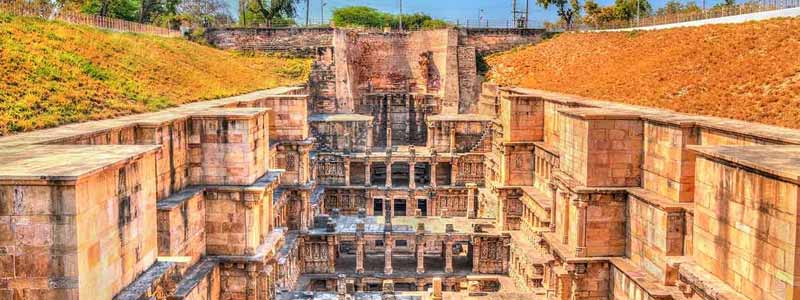
Best time to visit
Winter season from October to March is the best time to visit Patan as summer are too hot and humid. November to February is the peak season for tourist which attract considerable number to tourist from different parts of the country. During the month of December or January, a Rani ki Vav festival is held where one can enjoy the cultural programs along with exquisite local cuisine and street shopping.
How to Reach:
The best way to reach the Rani Ki Vav Gujarat is through taxi. One can also visit by public buses. If you plan on taking the bus, a number of intercity buses run from Ahmedabad to Patan and take approximately 3.5 hours to reach. Buses from Mehsana to Patan take about an hour. Shared jeeps are available as well, and they are slightly quicker but less comfortable.
By Air : The nearest airport from Patan is Ahmedabad, situated at a distance of 125 km from the city. A number of flights fly to and from here, connecting the city with the various parts of Gujarat as well as the country.
By Train : Patan lies on the Western Railway network of the Indian railways. The city is well connected with the rest of the country via a number of trains. There are many express and local trains that operate daily and are perfect for traveling from Ahmedabad to Patan.
By Road : Patan is linked to the rest of the country through a good road network. There is even a good network of National and State Highways connecting the city. The State Transport Corporation runs buses link Patan to all the major cities and towns of Gujarat and other states of the country.

